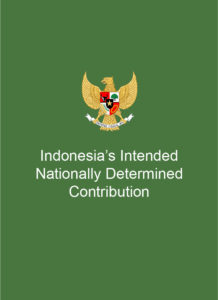Indonesia bases their climate action through their Long-Term Strategy for Low Carbon and Climate Resilience 2050. In the Annex 2 of the ENDC, Indonesia also mentioned several key programs in 3 separate areas related to climate adaptation efforts. These areas are Economic Resilience, Social and Livelihood Resilience, and Ecosystem and Landscape Resilience. In addition, the Indonesian Government and International Partner Groups (IPG) also signed the Indonesian Just Energy Transition Partnership to mobilise financing to support the country’s energy transition.
Indonesia has diverse energy sources used in TPES. Traditional biomass and oil are the main sources of non-fossil fuel and fossil fuel types.
Oil is the main energy source used by the end users, followed by gas. Electricity in TFEC is only about 16%, which indicates that the grid-connected electrification in Indonesia is relatively low.
N/A
| Topic | Title | Year | Issuing Ministry |
|---|---|---|---|
| Energy | National Energy Policy (KEN) Government Regulation No. 79/2014 (EN) </a > |
2014 | President’s Office |
| Energy | National Energy General Plan (RUEN) Presidential Regulation No. 22/2017 (ID) </a > |
2017 | President’s Office |
| Energy | Electricity Supply Business Plan (RUPTL) 2021-2030 RUPTL 2021-2030 (ID) </a > |
2021 | MEMR |
| Energy | Regulation on Acceleration of Renewable Energy Development for the Provision of Electricity Presidential Regulation No. 112/2022 (ID) </a > |
2022 | President’s Office |
| Energy | Regulation on Rooftop Solar Power Plants Linked to Electricity Networks of Holders of Electricity Supply Business License for Public Use (IUPLTU). | 2024 | MEMR |
| Climate | National Action Plan on Climate Change Adaptation (RAN API, or NAP in English). NAP (EN) |
2019 | MNDP |
| Finance | Requirements and Procedures for Licensing Carbon Trading Through the Carbon Exchange POJK No. 14/2023 (ID) |
2023 | OJK |
| Finance | Comprehensive Investment and Policy Plan (CIPP) JETP CIPP (EN) |
2023 | JETP Secretariat |

